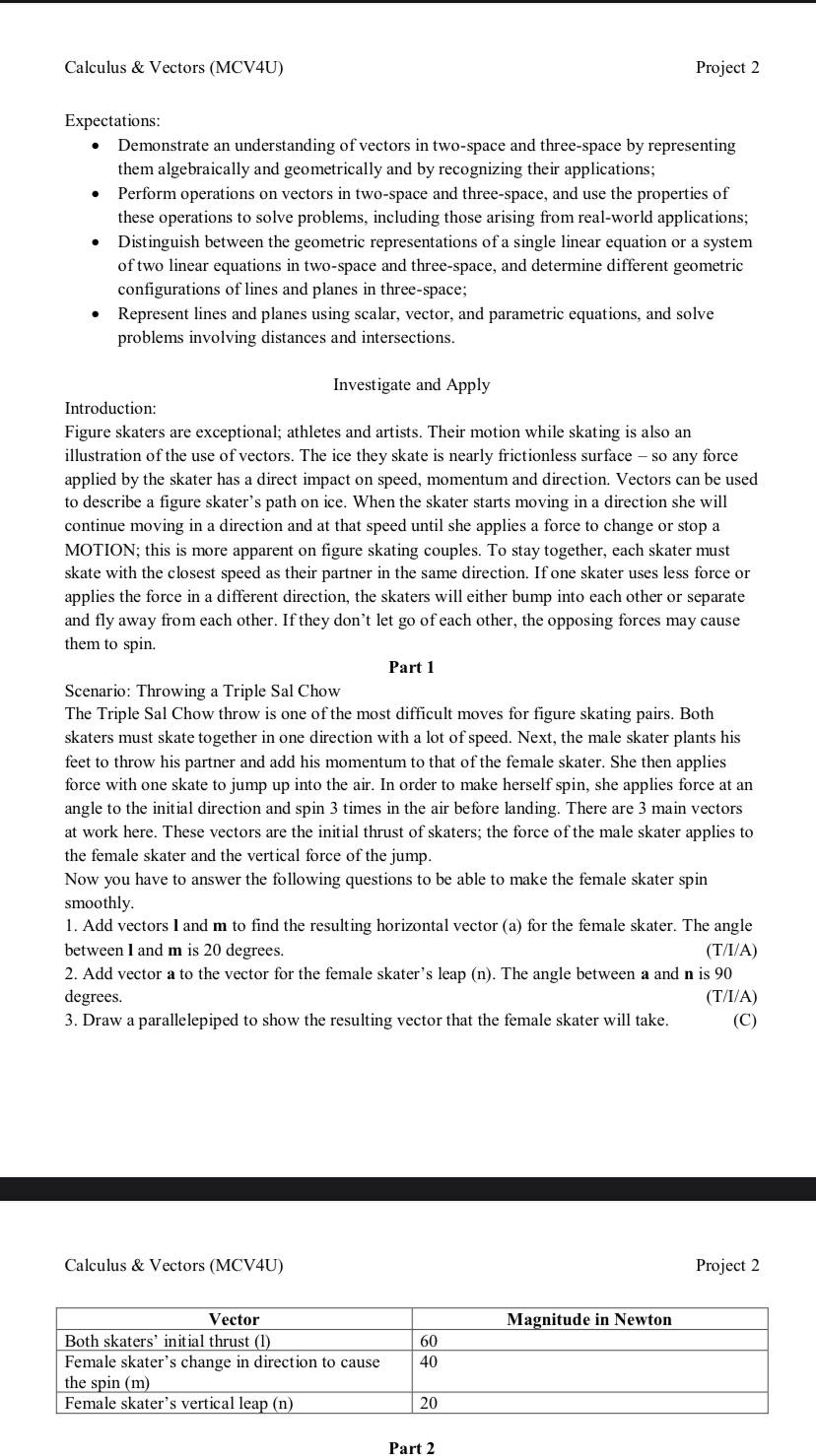
Calculus & Vectors (MCV4U) Project 2 Expectations: 0 Demonstrate an understanding of vectors in two-space and three-space by representing them algebraically and geometrically and by recognizing their applications; 0 Perform operations on vectors in two-space and three-space. and Lise the properties of these operations to solve problems, including those arising from real-world applications; 0 Distinguish between the geometric representations ofa single linear equation or a system of two linear equations in two-space and three-space, and detennine different geometric configurations of lines and planes in three-space; 0 Represent lines and planes using scalar. vector, and parametric equations, and solve problems involving distances and intersections. Investigate and Apply Introduction: Figure skaters are exceptional; athletes and artists. Their motion while skating is also an illustration ofthe Lise of vectors. The ice they skate is nearly frictionless surface so any force applied by the skater has a direct impact on speed, momentum and direction. Vectors can be used to describe a figure skater's path on ice. When the skater starts moving in a direction she will continue moving in a direction and at that speed until she applies a force to change or stop a MOTION: this is more apparent on gure skating couples. To stay together, each skater must skate with the closest speed as their partner in the same direction. Ifone skater uses less force or applies the force in a different direction, the skaters will either bump into each other or separate and fly away from each other. If they don't let go of each other, the opposing forces may cause them to spin. Part 1 Scenario: Throwing a Triple Sal Chow The Triple Sal Chow throw is one of the most difficult moves for figure skating pairs. Both skaters must skate together in one direction with a lot ofspeed. Next, the male skater plants his feet to throw his partner and add his momentum to that ofthe female skater. She then applies force with one skate to jump up into the air. In order to make herself spin, she applies force at an angle to the initial direction and spin 3 times in the air before landing. There are 3 main vectors at work here. These vectors are the initial thrust of skaters; the force ofthe male skater applies to the female skater and the vertical force of the jump. Now you have to answer the following questions to be able to make the female skater spin smoothly. I. Add vectors land m to find the resulting horizontal vector (a) for the female skater. The angle between I and m is 20 degrees. (TINA) 2. Add vector a to the vector for the female skater's leap (n). The angle between a and n is 90 degrees. (Tef IPA) 3. Draw a parallelepiped to show the resulting vector that the female skater will take. [C] Calculus & Vectors (MCV4U) Project 2 Vector Magnitude in Newton Both skaters' initial thrust (l) 60 Female skater's change in direction to cause 4|] the spin (m) Female skater's vertical leap (n) 20 Part2








